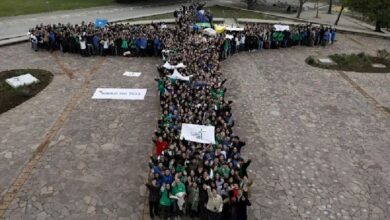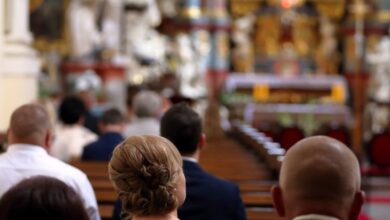After devastating arson, Los Angeles’ famed Mission San Gabriel reopens for worship

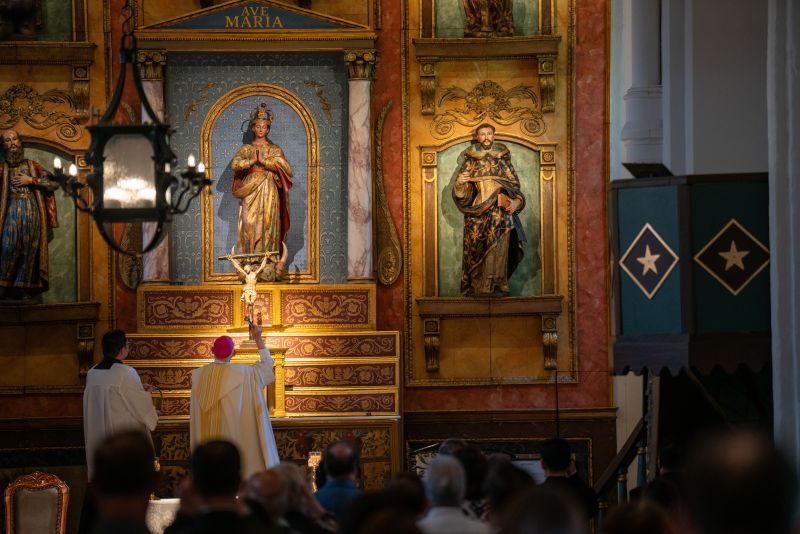 Archbishop Jose Gomez of Los Angeles blesses the newly renovated Mission San Gabriel at a June 27, 2023, ceremony. / Photo courtesy of Mission San Gabriel
Archbishop Jose Gomez of Los Angeles blesses the newly renovated Mission San Gabriel at a June 27, 2023, ceremony. / Photo courtesy of Mission San Gabriel Denver, Colo., Jul 3, 2023 / 15:40 pm (CNA).
Mission San Gabriel has reopened to the public for the first time since the arrival of the coronavirus pandemic and a devastating arson fire in July 2020.
At a June 27 ceremony attended by area Catholics and others, Archbishop Jose Gomez of Los Angeles blessed the renovated mission more than 250 years after its founding by the Spanish priest St. Junipero Serra. He emphasized the “gift of faith” that Serra and other Franciscans brought, which many indigenous Americans accepted and made their own.
“Mission San Gabriel will always be the true spiritual heart of Los Angeles,” Gomez said in a July 3 essay for the archdiocesan news site Angelus News. “The mission marks the birthplace of the Christian faith here and, 10 years after the mission was established, the city itself was founded by men and women who came from the mission.”
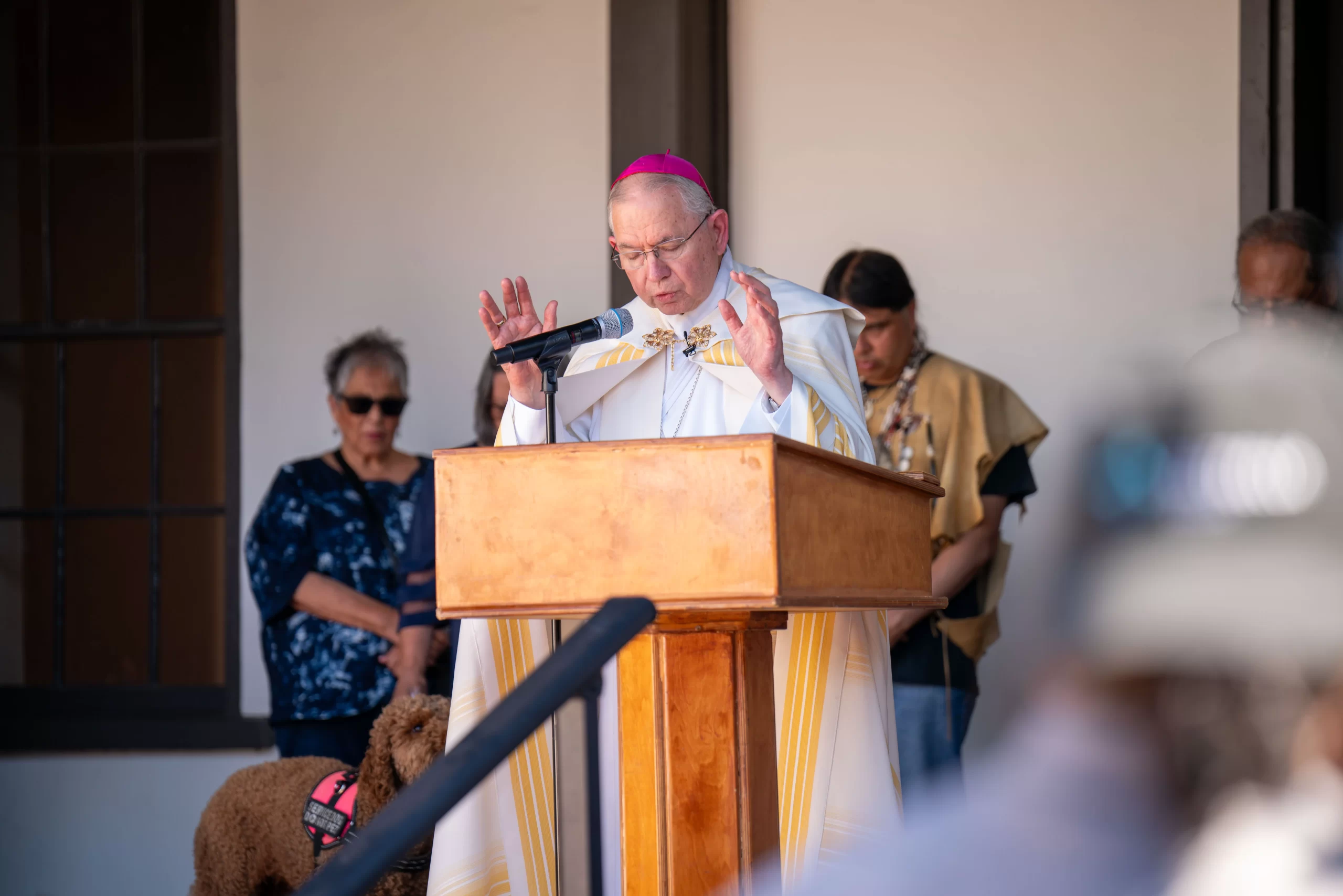
“The mission is a sign of the Christian beginnings, not only of our city, but of our nation,” he said.
The archbishop noted that St. Junipero Serra’s feast day falls on July 1, just before the United States celebrates Independence Day. He sees this as a providential reminder from God “that the missionaries were here first” and “that the people of this country were called Christians long before they were called Americans.”
The mission, founded by St. Junipero Serra in 1771, suffered a devastating fire during the early morning hours of July 11, 2020. The fire destroyed the roof and interior of the mission church, which is today the home of a Catholic parish.
The alleged arsonist, John David Corey, was charged with the crime in May 2021. He was known at the mission and had a history of conflicts with mission staff, law enforcement sources told the Los Angeles Times. Corey had already been arrested and sentenced to three years in prison for an unrelated incident when investigators named him as a person of interest in the Mission San Gabriel case. In December 2022 Corey, then 59 years old, pled not guilty to the charges and is awaiting trial.
The mission was the fourth founded by St. Junípero Serra, a Franciscan priest who founded a series of missions across California. Serra helped to convert thousands of native Californians to Christianity and taught them new agricultural technologies. San Gabriel would go on to be one of the most successful and productive of all the 21 California missions.
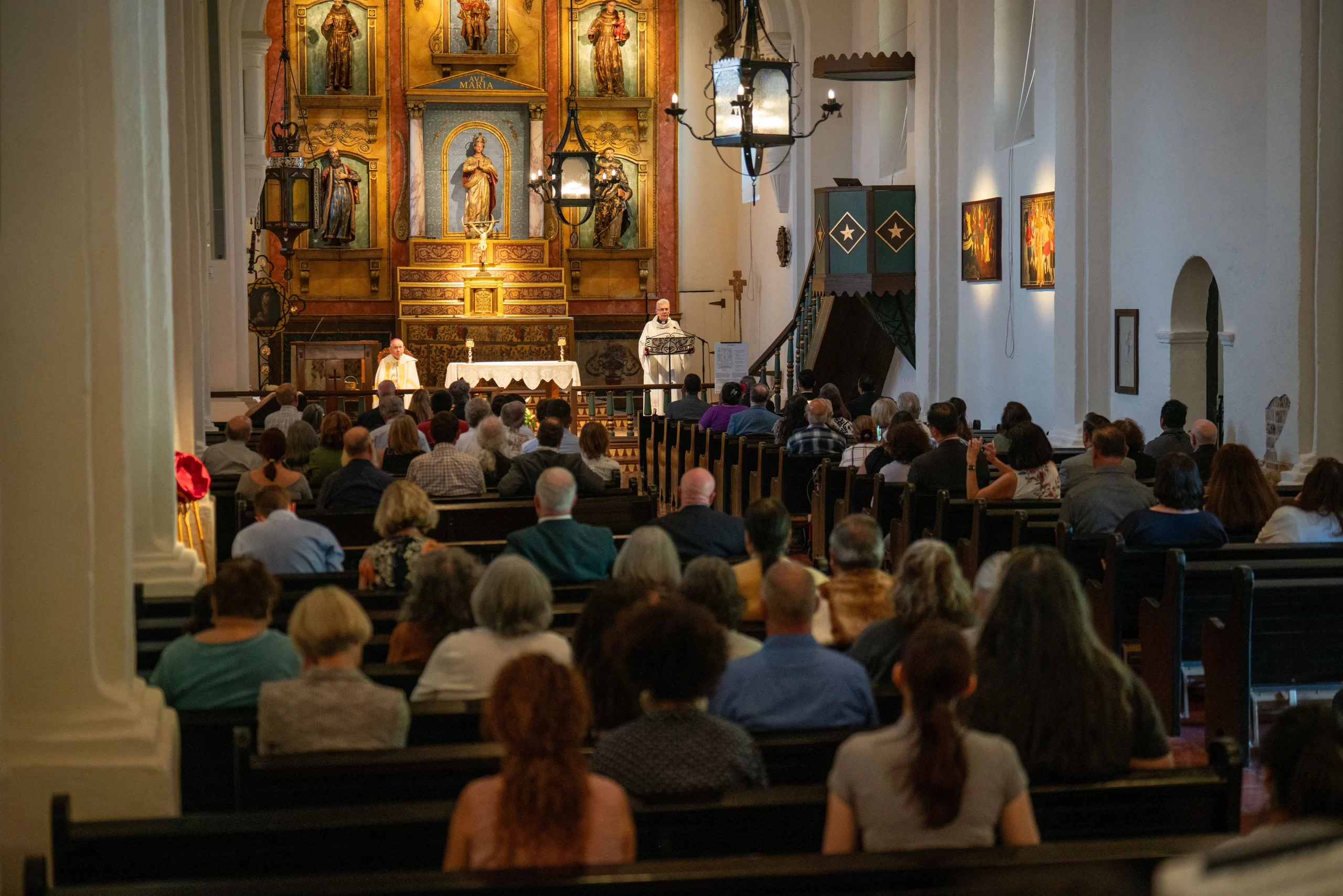
Gomez described the mission as “built by and for the Tongva natives, the first peoples of this land.” He said he blessed the mission church’s “exquisitely renewed altarpiece” and its renovated museum and garden space on June 27. The ceremony drew about 100 people, including descendants of those who lived at the original mission.
Among the new features of the museum is a white wall inscribed with the names of the 7,054 Native Americans baptized at the mission from 1771 to 1848. Gomez called the wall “a striking visual testimony to the truth that every soul is precious in the eyes of our loving God.”
Tribal chief Anthony Morales, himself a parishioner of San Gabriel Church, led members of the Gabrieleño Tongva San Gabriel Band of Mission Indians in singing traditional welcome songs, Angelus News reported. They remembered the natives buried on the mission grounds.
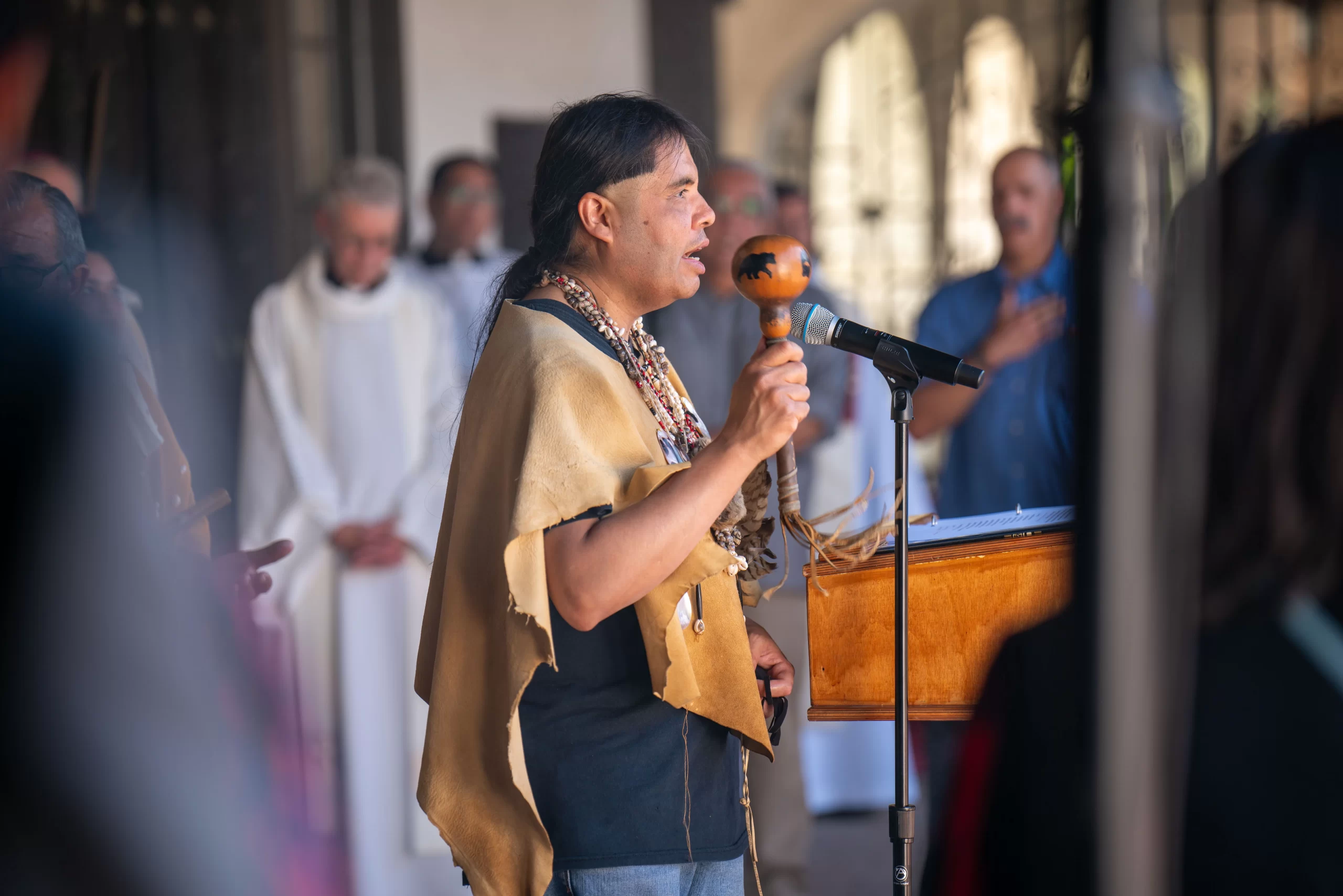
Adela Garcia, a Gabrieleño tribe member, grew up coming to the mission with her family. She told Angelus News that seeing the restored mission “brings me happiness” after seeing it nearly destroyed.
“There is going to be a lot of healing here,” she said.
The archbishop of Los Angeles reflected on their songs in his essay.
“The ceremony was built around their prayers, rituals, and sacred music, all in their native tongue,” Gomez said. He cited a “moving” line from one song: “O my ancestors, listen to my heart / O my ancestors, here is my heart.”
“These words remind us that our faith is never a solitary journey,” Gomez said. “We owe the gift of faith to our ancestors, to those who have gone before us, that great cloud of witnesses down through the ages who professed the Catholic faith and proclaimed it.”
“The missionaries came to this country with that noble intention, to share what they believed was the greatest gift they could ever give, the gift of knowing Jesus Christ and his love and salvation,” the archbishop added.
“As I walked the mission campus, I felt the strong sense that I was on holy ground, walking among the souls of the 5,000 Natives who are buried here, proud sons and daughters of this land’s ancient peoples who had met Jesus Christ and decided to make him the way and the truth for their lives.”
Gomez noted that the mission’s baptistry still has the original baptismal font used by St. Junipero Serra and other Franciscans. The museum also has the confessional believed to have been used by Serra as well as masterpiece paintings from the Spanish colonial era.
Before the fire, much of the artwork in the church had been removed as part of an ongoing restoration. A historic painting of Our Lady of Sorrows, depicting the Virgin Mary in a somber, dark landscape, was the only piece of artwork remaining in the church that survived the fire.
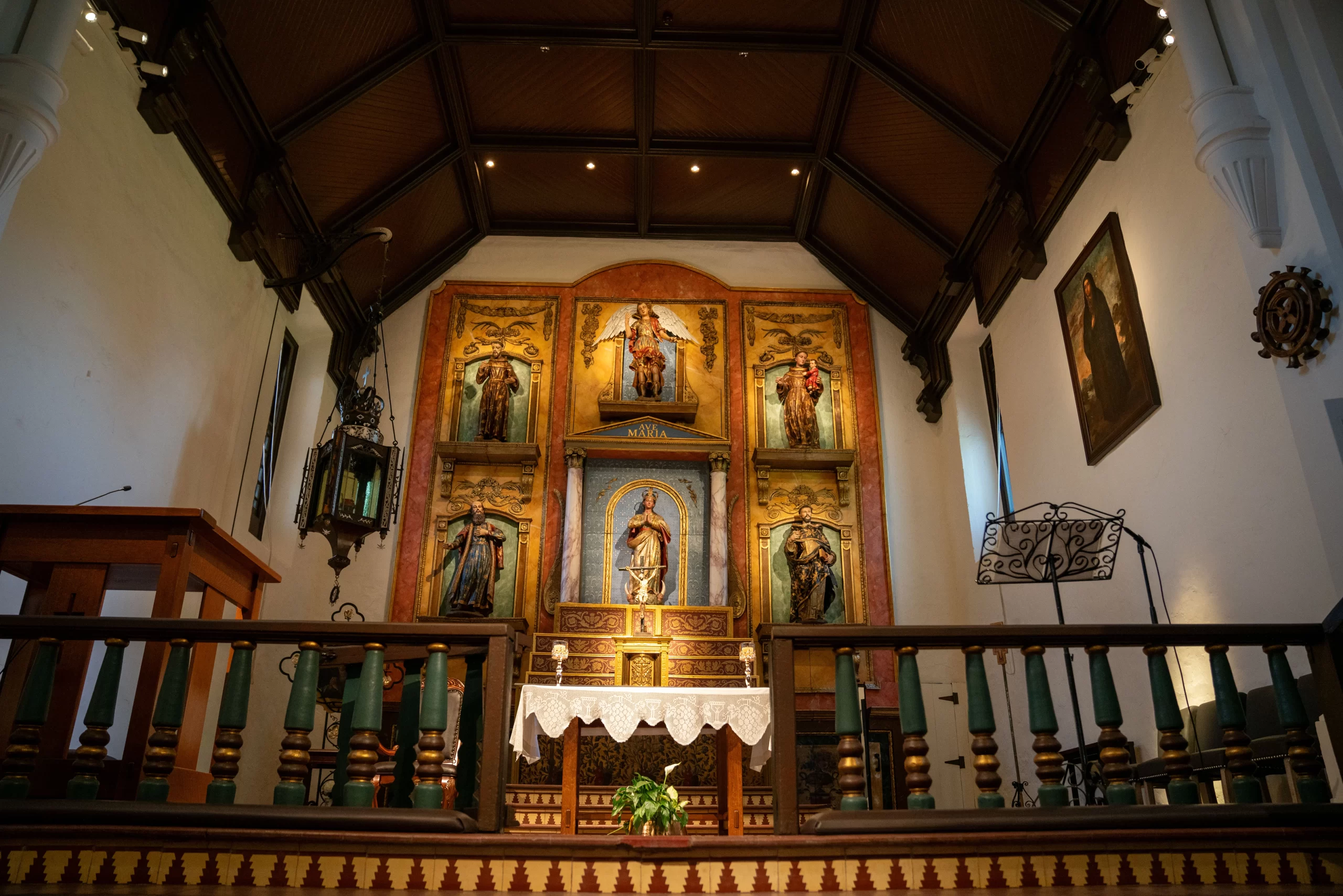
The museum has also been renovated to emphasize Native American perspectives.
Steven Hackel, a history professor at the University of California-Riverside, served as a curator on the renovation with Yve Chavez, a member of the Gabrieleño Tongva. The visual, audio, and interactive exhibits aim “to suggest the varieties of Catholic experience at the mission and the persistence of Native belief and practice within an expanding Spanish and Mexican realm,” Hackel said in remarks at the outdoor ceremony, according to Angelus News.
Museum visitors with smartphones can listen to historical audio recordings, including a rare recording of the Our Father in the Gabrieleño language.
Despite St. Junipero Serra’s record defending indigenous peoples, images of the saint have become focal points for protests and demonstrations across California by those who regard him as a symbol of colonization and Spanish abuses of the indigenous people, including their enslavement.
In 2020, in the wake of protests spurred by the murder of Minneapolis man George Floyd, numerous statues of the saint were torn down or vandalized by protestors.
Some California institutions, such as the University of San Diego, have put their statues of Serra in storage to protect them. Mission San Gabriel had put its images of Serra, including a bronze statue, into storage for this reason not long before the fire.




